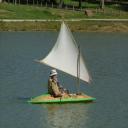Yahoo Answers is shutting down on May 4th, 2021 (Eastern Time) and beginning April 20th, 2021 (Eastern Time) the Yahoo Answers website will be in read-only mode. There will be no changes to other Yahoo properties or services, or your Yahoo account. You can find more information about the Yahoo Answers shutdown and how to download your data on this help page.
Trending News
How can I use this water meter circuit to control the activation of another?
http://www.instructables.com/file/FGO5G9DFH9ZFLVQ
I want to use this water meter to turn on/off another circuit, the other circuit is an LM3914 dot/bar display driver and an opamp (LM358N)
Struggling with it though. Currently my power supply is 5V/ground off a computer PSU. Eventually I want to use a 9V battery.
Any help appreciated :)
Ok, I'll explain myself a bit more.
The device is measuring a narrow absorbency spectra of urine using two opposing LEDs of a specific wavelength. The first LED is lit and castes light through the urine to the second LED which induces a voltage. I use an opamp to improve the signal from this LED and pass it on to the LM3914 to indicate the absorbance of light emitted by the first LED by the urine.
Urine passes through the device, and only when someone pee's on it.
So, I wanted to have it so the lit LED and following circuit was powered when there is urine passing through it.
I hope that gives you a better idea of what I'm trying to achieve. The help you've given so far is good though. Thank you.
2 Answers
- JohnLv 78 years agoFavorite Answer
in the circuit you show there is a high possibility the transistor will be fried.
If the resistance between the two probes is too low it allows a high current to flow through the base-emitter of the transistor.
You can prevent this by putting a 1k resistor in the base lead.
Also if you run the circuit from 5V then you get 5V - 3V / 47E = 40mA through the LED.
If you run from 9V you get 9 - 3 = 6/47E = 120mA. So you'd need to change that 47E resistor to around 180E
However I agree with fuzzy, it would be much better to use an AC (NOT MAINS!) system as he describes.
.. castes light through the urine to the second LED which induces a voltage
do you mean a photosensor?
Some good info on sensors in the link
Source(s): http://www.skillbank.co.uk/de/year3.htm - fuzzyLv 78 years ago
1/ switch over to using your 9V battery - it has a much lower potential current output so wont fry components when you get things wrong. That computer supply can pump out about 25 Amps!
2/ the circuit you've shown is not much good for what you want because the load you plan to drive with it isn't constant so the turn on turn off points will change with the load. Also using DC as here for water sensing means that one electrode will rapidly erode away (in days!!) Look around for an AC excited sensor - a 555 running as an astable feeding one electrode & the other electrode connected to a pulse sensing circuit & turning on an output.
It would help if I knew what you actually wanted to do with this.



